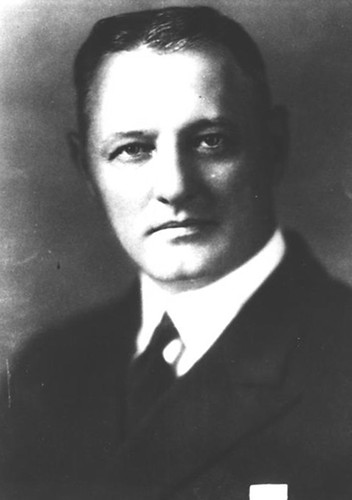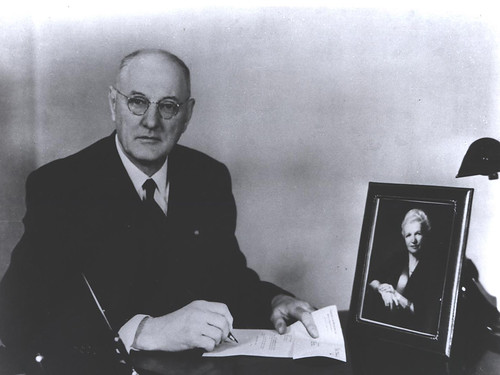Bill of Rights
United States Naval Captain Willis W. Bradley (1884 – 1954), governor of Guam from 1929 to 1931, attempted to make a series of changes in the way the island was governed. Upon arriving in Guam he used the 1929 Annual Report from the previous Naval governor to recommend to US Congress that CHamorus be granted US citizenship. Both the Guam Congress and the Guam Chamber of Commerce wholeheartedly endorsed his recommendation.
When he didn’t hear back from American officials in Washington DC he proclaimed the people of Guam to be citizens of Guam. He also created a Bill of Rights for Guam on 4 December 1930 modeled after the first Ten Amendments to the US Constitution. The bill also included the right of writ of habeas corpus and the privilege of voting in local elections regardless of race or sex. The writ of habeas corpus is an important instrument for the safeguarding of individual freedom against arbitrary state action.
To celebrate CHamorus put together a parade that ended in a public demonstration in the Plaza de España in the capital of Hagåtña to thank Bradley. James Underwood, postmaster of Guam and the president of the Chamber of Commerce, led the speeches of appreciation.
This Bill of Rights never went into effect, however, because the Secretary of the Navy informed the governor it did not meet with the approval of the US Navy Department. But when the law codes were revised in 1933 many of the provisions of the Bill of Rights were incorporated into them. The codes, though, could be wiped out by whomever was governor of Guam at the time.
Bradley was the only Naval officer to attempt to push civil rights for the CHamoru people.
General election
The following year, in 1931, Bradley also held a general election for the first time in the US Naval Era. People voted directly for representatives to the Guam Congress, an advisory body to the governors, and for municipal commissioners (mayors) and their deputies.
He dissolved the First Guam Congress which he didn’t believe was functioning as a representative body and then issued a proclamation that established a Second Guam Congress. As laid out by Bradley, this body consisted of a House of Assembly, with 27 members elected for two-year terms, and the House of Council, with 15 members elected for four-year terms. The first election was held in March 1931 and Bradley opened the first session 4 April.
The people also elected village commissioners for two-year terms.
Repercussions for Bradley
Besides these reforms Bradley used his time in Guam seeking improvements in education and infrastructure. He also gave commissary privileges to the priests due to their service to US military personnel.
The Navy was not happy with Bradley’s actions and threatened to remove him as governor of Guam. Bradley wrote:
I have no particular desire to leave Guam this year, nor do I desire to ruin my Naval career by argument with my superiors, and it seems that one or the other is in sight unless I am content to do as most of my predecessors have done, that is, simply let things drift along in the easiest channel without making any progress to speak of. Unfortunately, I am not built that way. When I see and understand the crying needs of Guam I shall fight for them as long as I am governor, even if it wrecks my future naval life. The result is that Guam has made more progress in the last year than in any two years – but that I seem to be constantly in hot water.
Gov. Willis Bradley
The Navy let Bradley be for a time but did recall him in 1931. US Congress passed a resolution, however, praising him for a his administration. The CHamoru people passed a resolution as well, asking if Bradley could represent them in the United States. This appeal was ignored and Bradley was passed over for a promotion.
The next governor of Guam, Captain Edmund S. Root, ignored Bradley’s plans for the advancement of Guam. The Depression was in full swing at that time, and funds for improvement projects were not readily available.
Personal background
Bradley, born in Ransomville, New York on 28 June 1884, called himself a Progressive Republican and a civil libertarian, He was the most liberal of any of the Naval governors assigned to Guam.
He graduated first in his class at Annapolis and won the Congressional Medal of Honor in World War I.
Bradley knew Guam well as he was in command of the USS Gold Star, a 4,500-ton cargo-passenger carrier, from 1924 to 1926 which was stationed in Guam. The Goldie Maru, as it was called in Guam, was the island’s station ship from 1924 until 1941.
He continued to serve in the Navy until his retirement in 1946 when he moved to California. He was elected to serve for one term as a California representative to Congress in 1947. He died in Santa Barbara, California on 27 August 1954.
Videos
For further reading
Farrell, Don A. The Pictorial History of Guam. The Sacrifice, 1919 – 1943. Micronesian Productions: San Jose, Tinian, Commonwealth of the Northern Mariana Islands, 1991.
Hanlon, David. “Patterns of Colonial Rule in Micronesia.” In Tides of History: The Pacific Islands in the Twentieth Century. Edited by K.R. Howe, Robert C. Kiste, and Brij V. Lal. Honolulu: University of Hawai’i Press, 1994.
Hofschneider, Penelope Bordallo. A Campaign for Political Rights on the Island of Guam, 1899-1950. Saipan: Commonwealth of the Northern Mariana Islands Division of Historic Preservation, 2001.
James, Roy E. “The Guam Congress.” Public Affairs 19, no. 4 (1946): 408-413.
Rogers, Robert. Destiny’s Landfall: A History of Guam. Honolulu: University of Hawai’i Press, 1995.
Thompson, Laura M. Guam and Its People. With a Village Journal by Jesus C. Barcinas. 3rd ed. New Jersey: Princeton University Press, 1947.




